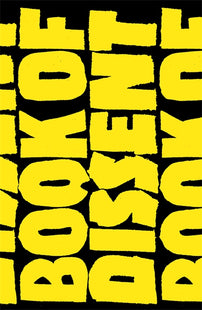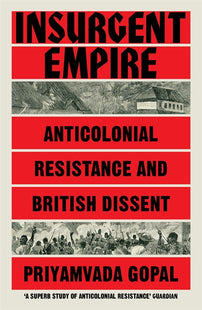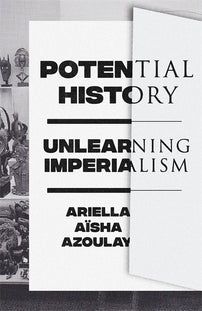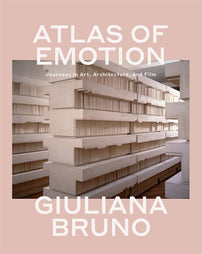Truth and Lies and Monuments
Robert Bevan investigates the political and historical debates behind taking down statues

Statues tell lies; deliberate, calculated lies. For those with the power and money to place them on pedestals, monuments are a tool to obscure the facts of history and shape a chosen narrative, to invent nationalist and civic traditions and to imagine communities. These street corner mass murderers are used to whitewash reputations and justify stolen fortunes. The lies are legion. All this we know. But more than being about manipulating history or active propaganda, these monuments can be spatial acts of oppression.
For example, in the period immediately after the Civil War, apologists for the Lost Cause such as the United Daughters of the Confederacy had been funding memorials to the dead in war cemeteries, but as Black Americans began to assert their freedom in the Reconstruction era following manumission, the United Daughters and other white supremacists fought back: Over the next decades, the focus of monument building shifted from the graveside to the centre of towns and cities, often associated with the courthouse square. The equestrian generals, obelisks and simple, mass-produced ‘Silent Sams’ were designed not just to perpetuate the lie that the war had been about state rights rather than chattel slavery, they aimed to assert control over segregated public space, and serve as reminders of who could enforce justice and injustice. They were territorial markers.
Similarly, in Bristol, at another point of the triangle trade, and still today one of the most racially divided of UK cities, Slave trader Edward Colston has been the city’s most honoured son, patrolling and shaping the Bristol story across the centuries via its commemorative environment. He has played a central role in Bristol’s image of itself as city with admirable history of charitable giving. This is not just the now toppled statue in the city centre and the name of a concert hall but street names, schools and almshouses. As recently as last year, school children were being shepherded to the cathedral to religious services praising Colston. “GO AND DO GOOD LIKE WISE” ran the text from the Good Samaritan (Luke 15:37) across Bristol Cathedral’s massive stained glass Colston memorial window. At the time of writing, the window is covered, ahead of a planned removal of some of its elements.
When Edward Colston died in 1721 it was after a lifetime of involvement in the Atlantic slave trade. He was complicit in the death of tens of thousands of Africans shipped in the sickening conditions of the Middle Passage to the plantations of the Leeward Islands and the Americas. Here men, women and children, were starved, beaten, mutilated and raped. It is thought some 85,000 set off on the journey under Colston’s control. Around a quarter never made it and were thrown overboard. Average life expectancy on arrival in the West Indies was seven years.
Born in Bristol, Colston worked most of his life in London and rose to be Deputy Governor of the Royal African Society, which until 1689, had a monopoly on the English slave trade. The Society branded RAS on the chest of each of its slaves (other had DY for the Duke of York). When the trade was opened up, Colston assisted Bristol merchants in their ventures. By the 1730s, with Colston’s help, Bristol had outstripped London as the nation’s leading slaving port. Coffee, sugar, cocoa, cotton, indigo, rum and other slave produced goods were dealt in and manufactured items exported to Africa to sell in exchange for slaves. The music venue Colston Hall was built in 1867 on the site of Bristol’s first sugar refinery. Colston was not alone. Many other leading Bristolians were engaged directly and indirectly with the slave trade and the city was remodelled and enriched with edifices erected on its profits. England’s oldest working theatre, the Theatre Royal of 1766, was founded by 50 patrons who included leading lobbyists for the African trade and anti-abolitionists, while much of elegant Clifton was built on slavery’s back.
One could imagine that there might be a certain embarrassment about the bloody source of Colston’s largesse. Perhaps there was, because, until relatively recently there was mostly a silence about Bristol and Colston’s slaving past. When Bristol held its Festival of the Sea in 1996, the lack of a mention of slavery led to protests. Colston’s School website made no mention of slavery but praised the generosity of Edward Colston. In Bristol Cathedral, there was only a tiny apologetic notice in the north transept pointing out that some of the nearby graves might be those of slave owners and no proper interpretation of Colston’s massive memorial window. “You as well?” grumped a verger when I asked to be directed to the window in 2017. “We have to be careful that people don’t put a brick through it,” added a chaplain some years before Colston toppled in the aftermath of George Floyd’s murder in distant Minnesota. “This is the Victorian corner where they all worked hard,” explained a guide showing visitors around the north transept’s memorials.
Colston’s statue had been carefully sited in an open space called ‘The Centre’— Bristol’s pantheon. At one end is a cenotaph and at the other, just off the Floating Harbour, Queen Victoria. In between are Neptune, the philosopher Edmund Burke, a drinking fountain and John Cassidy’s bronze statue of Edward Colston on his Portland stone plinth. Colston’s plaque states that the statue was “Erected by Citizens of Bristol As A Memorial of One of the Most Virtuous and Wise Sons of their City”.
But like the Confederate statues across the southern United States, appearances are deceptive. These Colston commemorations, for the most part, do not date from the time of his death but are often from much later. The statue was erected in 1895 more than 170 years later. The cathedral window was dedicated in 1890. This flurry of commemorative activity was part of the statue mania gripping late-Victorian England and in Bristol specifically it was about the city’s elite creating a cross-class civic narrative and paternalist figurehead in the face of rising industrial unrest in the docks and beyond. The Centre’s statues were shuffled around to lend Colston prominence and honour.
One of Bristol’s elite gentlemen’s clubs, the Anchor Society paid for much of the cost of Cassidy’s bronze after public subscriptions failed to raise the money. Yet Colston’s 1890s promoters must have known that they were doing wrong: Slavery had been abolished across the empire decades earlier and even by the 1780s people were beginning to distance themselves from the Guinea trade.
Such knowing lies are embedded in many aspects of our built environment. The statue of Cecil Rhodes high on the façade of Oriel College, Oxford with its motto praising his splendid generosity, for instance, was paid for by Rhodes himself who financed the whole building: Before death, this imperial genocidaire carefully curated his post-humous reputation and he went to great lengths to shape his memorial legacy across southern Africa and in the UK. So Boris Johnson’s Trumpian tweets that removing such statues is “to lie about our history” is itself fake news, turning the truth of the situation entirely on its head.
In recent weeks though, various commentators have claimed that statues are not history. This simply will not do; the evidence supporting the historical record is not only words on a page but also material artefacts. It is true that the architectural and monumental can be useful dupes for those wishing to manipulate the past with the apparent permanence and neutrality of non-figurative stone and bronze being especially effective in disguising the built environment’s ideological content, but verifiable facts about history are vital and built fabric can absolutely evidence the past, to the point where the architectural can be a crucial witness.
“No holes, no Holocaust” has been a favoured aphorism among Holocaust deniers. They have spent many decades myth-making about the supposed lack of holes in the roof of chambers at Auschwitz-Birkenau through which to deliver Zyklon B gas, using these false arguments over design details to diminish and deny the Holocaust entirely. The point was a central one at the libel trial between Holocaust denier David Irving and Deborah Lipstadt/Penguin book with several hundred pages of architectural evidence about the death camps. Blueprints, construction contracts, surviving brick and concrete; all were debated and used successfully to trounce Irving’s arguments.
Likewise, Kristallnacht; likewise, the pattern of mosques and Islamic cultural monument destruction by Serbs and Croats during the 1992-95 Bosnian war. Likewise, the Sinofication of Tibetan cities; all evidence of genocidal intent or at the very least ethnic and cultural cleansing. This is not to suggest that the toppling of Colston and his ilk are cultural cleansing but we do need to recognise that even when statues are lying, they are evidence of what the ruling class perversely values and what it has been willing to honour and lie about to better enforce its writ. Public statues such as Colston and his Confederate equivalents, unwittingly tell us truths about how this oppression is exercised to control urban space. In this they are akin to the Fascist tactic of achieving power through street thuggery.
However, the argument that protestors are making history not erasing history is not one that bears close examination.; sometimes iconoclasm is erasure, and in some circumstances rightly so. In any case, these actions are not necessarily mutually exclusive. We need to understand the past and guard evidence of wrong-doing, of that reality itself. All sorts of evidence is useful if we are to successfully smash the mythology of colonialism and empire and have an honest reckoning with those elevated into places of honour. Orwell’s words from 1984 about those who control the past control the future have become a lazy journalistic go-to, but history and memory are central themes of the novel and and later in the same passage, Winston Smith muses: “For how could you establish even the most obvious fact when there existed no record outside your own memory?”
This is absolutely not an argument for the wholesale retention of the extant commemorative landscape—quite the opposite. Many of these monuments are just too egregious, too insulting to walk past every day to remain in public, aggressively controlling space. (As one meme asks: “If someone kidnapped your child and sold them, where would you want us to put the statue of that person?”). But a meaningful conversation and decision-making framework involving affected communities is necessary if we are to make useful decisions about what to keep and what to move to a museum, what is valuable evidence and what is useless dross we can discard entirely.
In some circumstances new layers can be added to a monument that, if at a sufficient scale, can challenge the past and make a progressive statement in the middle of a busy public realm rather than left to forgotten corners of museums. Such recontextualizations have included Carlos Colombino’s celebrated reworking of a statue of the Paraguayan dictator General Alfredo Stroessner which re-arranges and crushes the original figure. In Bolzano in northern Italy, a Fascist frieze on a public building has been overwritten with LED script spelling out Hannah Arendt’s anti-totalitarian phrase: “Nobody has the right to obey” in the three local languages: Italian, German and Ladin. The past is not effaced but instead reinterpreted. In German terms, these types of interventions transform sites of honour (Denkmal) into sites of shame that warn and record (Mahnmal). Banksy’s sketch suggestion for Bristol was to put battered Colston back on his pedestal but adding bronze figures of protestors who are pulling the slave trader down in perpetuity –commemorating a victory of the people over lies.
Events, in any case, can add fresh layers of meaning, of course. The power of the Colston dethronement and his almost ritualistic drowning in the nearby harbour will have more resonance down the years than the council vacating the plinth overnight as has happened to some Confederate memorials or the figure of Robert Milligan in London’s docklands.
Rebalancing the memorial landscape also involves more monuments to the achievement of, for example, BAME individuals, women (other than Queen Victoria, there are more statues of dogs than of real women in Edinburgh) and queer people. One could start with the government overturning its refusal to fund the national transatlantic slavery memorial in Hyde Park. Care is needed even in these balancing memorials; the white figures commemorating the Stonewall Riots in New York, for example, erase the pivotal role black trans women played in the episode.
This is what the memorial landscape’s gatekeepers could have been doing over past decades. Instead, when pressed by justice campaigners, the institutions have consistently shirked their responsibilities, have obfuscated, stalled or remained silent in the face of legitimate questioning. In the UK context this includes Bristol City Council, the Church of England, Oriel College and Oxford University more widely, plus many others. Only a few years ago, Countering Colston activists were not all calling for the removal of the 1895 statue – some would have accepted a new plaque acknowledging Colston’s record with clarity. It was a failure by the authorities to act, kow-towing to another of Bristol’s white elite clubs, the Society of Merchant Venturers who blocked a new plaque with more accurate wording (itself entirely insufficient), that resulted in them reaping the whirlwind.
Labour councils now say that they are committed to action – or at least to systematic reviews of the symbolism in the public realm. This follows in the footsteps of cities such as New York and Yale University. The danger here is that the process can be used more for reputational protection than bringing about meaningful change. Bristol University, for example used the findings of Yale’s Committee to Establish Principles on Renaming to debate the name of its magnificent Wills Memorial Building. The discussions extrapolated from the Yale principles which ask whether an individual’s legacy and reputation were contested at the time when the original commemoration took place.
The commemoration in this case was being promoted by the family of H O Wills who worked in the family business from 1846, arguably while slave-produced tobacco from the Americas was still being used. In 2017, the University decided that it would not rename the building, arguing that the university’s very existence as an institution had been dependent on Wills money and that this was his chief relevant legacy.
Who gets to decide what the chief relevant legacy thus becomes part or the problem. Bristol Cathedral has said that it was activists from Countering Colston who were pressing for the memorial window to be removed but the activists reject this account saying they were more concerned with the cathedral involving schoolchildren in ceremonies celebrating Colston’s life as late as November 2019. With commemorative gatekeepers squandering their repeated chances to do the right thing, it is no wonder that the angry and insulted take matters into their own hands. We should always stand by the oppressed when this happens.
At the same time, we need to avoid identity and culture wars on the Right and Far Right’s terms. The stakes could not be higher; where Charlottesville had white supremacists chanting ‘Jews Will Not Replace Us’, London has had Neo-Nazis Sieg Heiling at the Cenotaph. It would be a mistake to allow the Johnson government to shift the debate entirely to symbols or Churchill’s anti-Nazi credentials rather than the deaths of Cynthia Jarrett, Mark Duggan and Belly Mujinga, or the disproportionate BAME casualities of Covid-19, or the need to decolonise the curriculum. Mentioning Colston, Angela Davis recently warned of exactly this. A 2014 report by the Runnymede Trust found that Bristol had the worst inequities based on race of ten ‘core’ cities it looked at, the third worst in terms of educational inequality.
In such a context, we have to ask in what circumstances are symbols of oppression the same as actual oppression –ie an intrinsic component part its spatial operation – and where they are simply a culture war proxy? We should not be stymied by cynical gatekeepers, but neither must we carelessly give a point of entry to the liars and deniers of the mortal cost of colonialism or the Holocaust. Because the devil really can be in the details.
Hannah Arendt warned that the ideal subject of totalitarian rule is not the convinced Nazi or Communist – and at the time of her writing that meant Stalinist – but “people for whom the distinction between fact and fiction…and the distinction between true and false…no longer exist.” Best not let the statues wars get to that point.
Robert Bevan is a heritage specialist and the author of The Destruction of Memory: Architecture of War [2006/2015] and the forthcoming a forthcoming book on contested space for Verso. He is also the architectural correspondent of the Evening Standard.
[book-strip index="1" style="display"]



